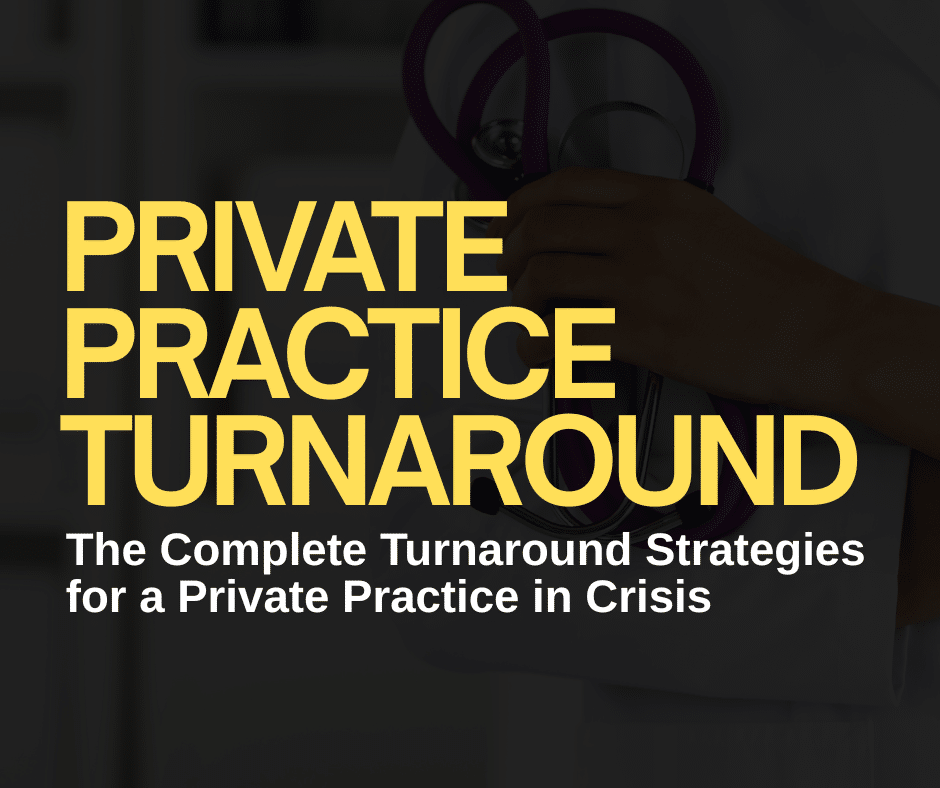
So, who’s got it better? Doctors who care for patients on an inpatient or outpatient basis? Which of them has more stress in their job, and does that impact their lifestyle?
As we all know, the past three years have changed the landscape of medicine in more ways than we could have imagined possible pre-pandemic. The number of doctors who report that they are experiencing stress leading to burnout has skyrocketed.
It seems that the ripple effects of burnout and its impact on our lifestyles will continue into the next decade. If the future of healthcare has any chance of providing care and opportunity for us as doctors to flourish, some changes will need to be made.
And in the meantime, no matter which specialty we practice, we all want to reduce stress and create a lifestyle we enjoy.
Distinctions Between Inpatient and Outpatient Care
Outpatient care (also called ambulatory care) refers to any service or treatment that doesn’t require hospitalization. An annual exam with a primary care physician is an example of outpatient care, but so are emergent cases where the patient leaves the emergency department the same day they arrive.

Any appointment at a clinic or specialty facility outside the hospital is also considered outpatient care.
“The most common outpatient procedures are going to a hospital for tests, attending an outpatient clinic, or having a consultation in the hospital with a specialist. It isn’t until admission paperwork is filled out and the patient is formally admitted that they change to inpatient services. The main exception is for those to come to an emergency department — they’re still considered an outpatient while they are there. This is the same for private and public hospitals.” – Ann O’Gorman Skarratts.
Inpatients are admitted to stay in the hospital — whether for two or more nights or for an extended period. Doctors keep these patients in a ward to monitor them more closely.
While there’s a clear difference between an inpatient and an outpatient, there is a little gray area. Physicians will sometimes assign a patient observation status while determining whether hospitalization is required. This period typically lasts for no more than 24 hours.
Primary Care Physicians
Traditionally, primary care physicians have been viewed as outpatient providers, while specialists are considered inpatient physicians. But that’s an oversimplification, particularly when hospitalists bridge the gap by providing general medical care to inpatients.
Many doctors also divide their time between inpatient and outpatient services. For example, OB/GYNs provide inpatient care when delivering babies and outpatient care consulting with pregnant women during prenatal checkups.

Generally speaking, inpatients have contact with a larger group of providers. They could interact with physicians, nurse practitioners, lab technicians, physical therapists, pharmacists, and physician assistants during a hospital stay.
Let’s Talk About Outpatient Doctors
Obviously, there’s a significant difference between a day in the ER and a day spent consulting or following up with patients. Performing minor surgeries, particularly ones that use less invasive techniques, or routine physical exams aren’t nearly as stressful as in overcrowded emergency room settings.
It’s never been more clear that emergency department crowding is a huge problem. Unfortunately, as long as this issue is considered ED’s operational problems and inefficiencies, the serious reality that the entire health care system is dysfunctional across the US is missed.
In a comprehensive 2021 article, NEJM Catalyst refers to crowding in emergencies across the country as the canary in the coal mine. While emergency medicine provides the best setting to evaluate “unscheduled, acute undifferentiated and decompensated conditions,” unless it operates efficiently, everything that follows is compromised.
The burden and expectation placed on doctors and nurses who work in a hospital’s ED lead to doctors repeatedly saying that the pressures in the system that keep them from getting their patients the care they need are the primary source of their distress. They call it a moral injury.

Medscape released a Physician Burnout & Depression Report 2022 with results that showed emergency medicine physicians have the highest amounts of burnout. The survey was conducted with more than 13,000 physicians in 29 specialties.
Burnout among emergency doctors in 2021 was listed at 43%. This number jumped to 60% in 2022.
Whether doctors were treating inpatients or outpatients, 60% of the doctors surveyed said that too many bureaucratic tasks (e.g., charting, paperwork) contributed most to their burnout. The next highest burnout contributor was listed at 39%, citing a lack of respect from administrators/employers, colleagues, or staff.
And when it came to burnout in a work setting, outpatient clinics and hospitals saw a big jump in the percentage of burned-out physicians. In the 2021 report, 46% of physicians working in outpatient clinics reported burnout (now 58%), and 40% of physicians in hospitals considered themselves in some stage of burnout in 2021 (now 48%).
So, in comparing the difference in stress and lifestyle between inpatient and outpatient doctors, it’s clear that we need to drill down deeper to get a good sense of how specifics of in- and outpatient care impact stress and lifestyle.
While it’s clear that both types of doctors deal with stress affecting their lifestyles, it may not be the same for each group. It seems clear that some outpatient procedures like minor surgeries (particularly ones that use less invasive techniques), colonoscopies, mammograms, consultations, and routine physical exams result in less stress for doctors. In contrast, high-volume, pandemic-related, or inner-city emergency rooms have the highest stress levels.
Emergency Medicine
Emergency medicine specializes in treating acutely ill patients with urgent healthcare needs. This can be treating acute conditions like myocardial infarction or heart attack, treating exacerbations of chronic health conditions, stabilizing patients involved in trauma, and more.
At the same time, you’ll be treating relatively minor injuries that sometimes can’t wait for an appointment to be made or caring for patients who aren’t sure what’s wrong but are sure they need help.
Because EM doctors treat acute conditions from every field of medicine, they have to know a little about everything but don’t dive deep into any specific domain. They’re more like a jack of all trades, masters of none. An emergency medicine friend says, “if you ever have a medical problem, we are the second-best doctor.”

Community emergency medicine doctors are expected to do everything. At larger community hospitals, there will be more specialists for support, but at smaller community hospitals in more rural settings, there’s less support and a larger scope of practice. You’ll be treating more patients on your own, but you’ll also be transferring more complicated patients to other facilities that are better equipped.
Urgent care is unique in that it’s done at a stand-alone facility, usually without a hospital or other specialties for backup. Lower acuity cases often show up there, and you’ll be able to transfer patients to the emergency department, depending on how sick they are. This less stressful environment is considered a good option for doctors wanting to ease a bit toward the end of their careers.
Advantages of Working in Emergency Medicine
As stressful as this work can be, there are a lot of positives to emergency medicine. In terms of lifestyle, some love it; others hate it. On average, EM doctors work around 40 hours per week, which usually translates to 3-4 shifts per week, meaning you have several days off.
This is typically shift work, clocking in and clocking out. You don’t need to take work home with you, which isn’t something you can say about most other medical specialties. While that’s a plus, the downside is that you’ll be working irregular hours depending on your shifts, so a regular circadian rhythm is hard to come by.

The pay scale for emergency medicine doctors depends on the region and type of hospital you’re practicing at. On the high end, ED doctors in New Mexico are paid $395/hour; on the low end, ED doctors in New York are paid $130/hour.
The average ED doctor makes roughly $350,000 per year. In emergency medicine, sometimes the compensation structure is based on the number of patients you see. The more hours you work, the higher your compensation.
Disadvantages of Working in Emergency Medicine
Unfortunately, many patients abuse the emergency department, which can bring a lot of stress and frustration.
Undocumented immigrants or uninsured patients often use the ED as their source of primary care rather than for urgent medical conditions. Homeless patients may pretend to have medical issues so they can have a roof over their heads and food to eat for a night.
These situations aren’t necessarily the patients’ fault, but as an emergency medicine physician, the emergency department serving as a safety net becomes a source of frustration. Dealing with highly agitated or intoxicated patients also means that EM doctors are at higher risk of physical harm from patients compared to most other specialties.

These and other reasons are why EM doctors experience some of the highest rates of burnout. Some contributing factors include working on the front line, consistent high intensity and stress, unpredictability, increasing the time required for charting at the expense of patient interaction, and irregular circadian rhythm. There’s also a fear of litigation looming over your head, given the higher rates of malpractice claims compared to the average physician.
Let’s Talk About Inpatient Doctors
Also commonly referred to as a hospitalist, an inpatient physician is a medical doctor who has typically been trained in the internal medicine specialty and works only in the hospital with admitted patients who will be there for at least one day. They don’t generally work in private practice and tend to devote service entirely to one specific hospital.
General duties include case management and consulting with primary care providers. Hospitalists mark a change in how healthcare services are provided to hospitalized patients, as this field is somewhat new in certain regions of the world and is growing in demand.
The duties of an inpatient physician start when a patient is admitted and continue through after-care visits. Acting as the primary case manager for a specific patient, the hospitalist is responsible for coordinating and scheduling necessary surgeries and diagnostic tests and consulting with assigned specialists regarding their care.

These doctors work to ensure that the hospital supplies and resources are obtainable to provide patients with optimal care and service. Certain inpatient physicians can also usually be found working in the capacity of department heads, such as chief of general surgery or internal medicine.
The general surgeon is sometimes employed as an inpatient physician, as they perform various surgical procedures in hospitals on permanent staff. Hospitalist surgeons are required to endure a rigorous course of study, as they must complete approximately 300 surgeries as part of residency training. Becoming an inpatient physician of this type takes many years of education, as the residency is about five years after medical school is finished.
Amongst medical students and physicians, the stereotype of doctors in internal medicine is that they love thinking and talking more than they love doing. This stereotype exists because, in inpatient medicine, teams spend several hours, sometimes up to half a day, rounding on patients and discussing the minor nuances of which antibiotic to prescribe or the minutiae of a mysterious disease.
Advantages of Working in Inpatient Medicine
As stressful as this can be, there are a lot of positives about inpatient medicine. Some love it; others hate it. On average, hospitalists work a seven on, seven off schedule. This translates to two mini vacations each month.

The pay scale for physician-hospitalists again depends on the region and type of hospital where you’re practicing. Zippia rated Alaska as the highest paying state, with an average annual salary of $258,366. At the lowest scale, DC hospitals earned $215,000 annually.
The average inpatient doctor makes roughly $244,508 annually, typically between $215,015 and $276,962. Salary ranges can vary widely depending on many factors, including education, certifications, additional skills, and the number of years you’ve spent in your profession.
Disadvantages of Working in Inpatient Medicine
The main disadvantage of working as a hospitalist is that you may not know your patient’s detailed medical history as well as their primary doctor.
The flip side of this problem is that your patient’s primary care doctor may not have access to the details of their hospitalization care (tests, procedures, results, medications, medical plan of action, etc.). While good communication between the primary care doctor and the hospitalist can deal with these problems, important details don’t always get communicated clearly.

Having said all that, it’s clear that there are lots of stresses in being a doctor, no matter which type of medicine you choose to practice. More of us than ever are struggling with burnout and the impact it has on our lifestyles.
I’m passionate about offering what I’ve learned as a way to take charge of your life again by viewing your work as a medical entrepreneur. This shift in thinking takes power away from the “system” and puts you in the driver’s seat when practicing the kind of medicine you want, managing stress, and feeling fulfilled.

